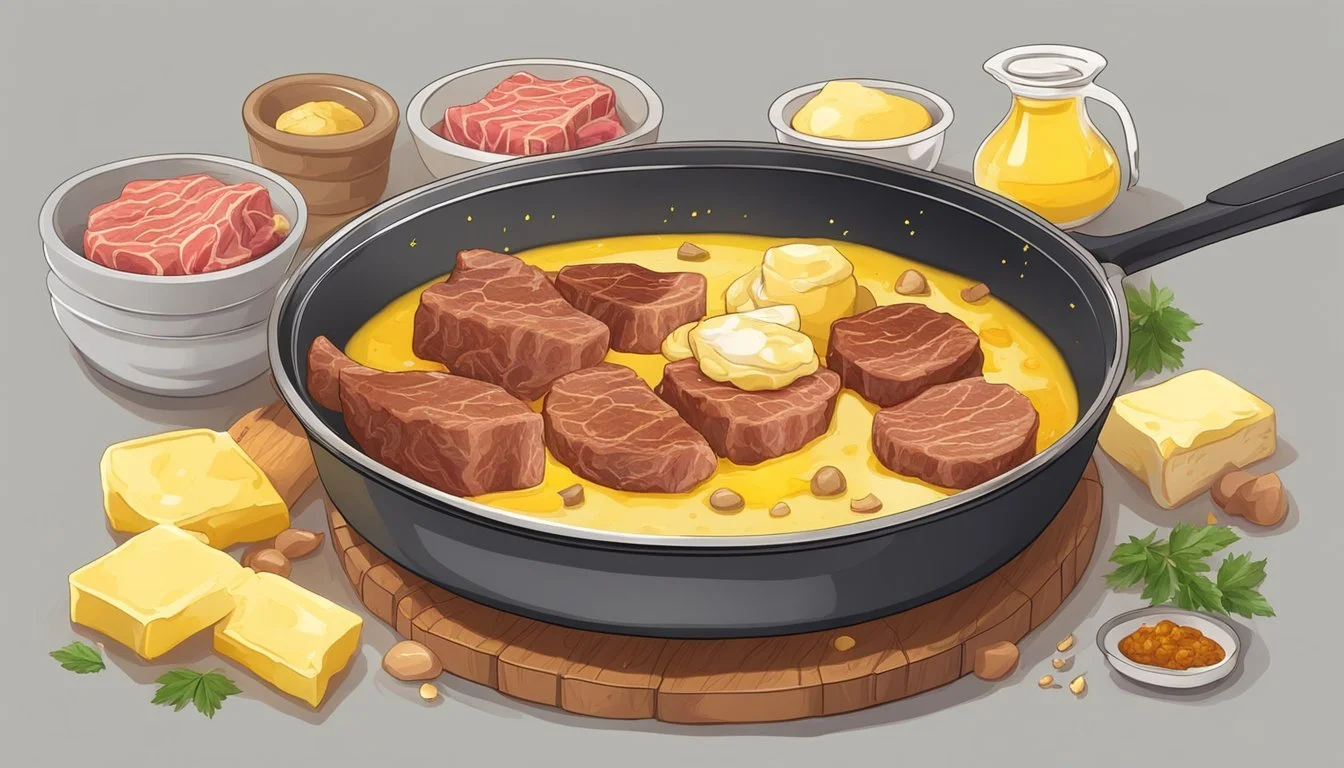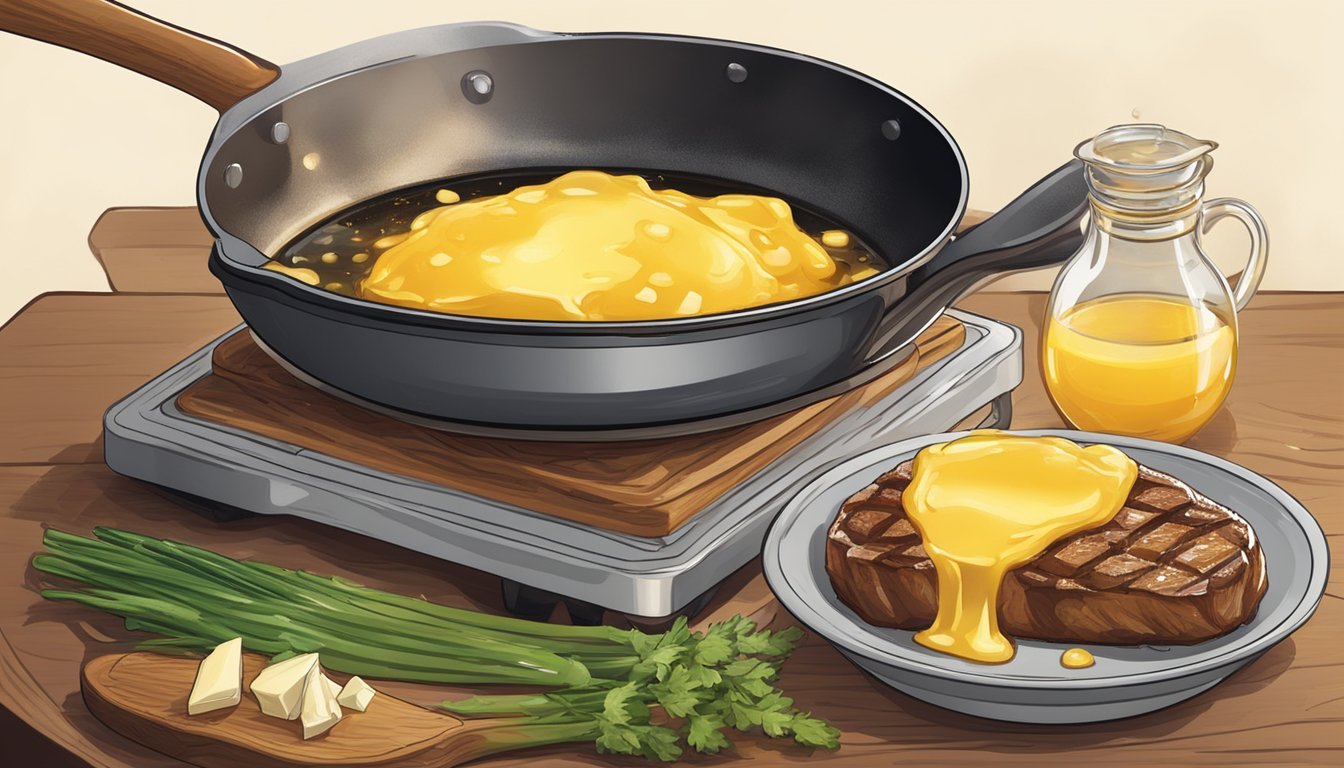Ghee vs Butter Carnivore Diet
Key Differences Explained
When it comes to the carnivore diet, choosing the right fats is crucial for enhancing flavor and nutrition. Ghee and butter are two popular options, each offering unique benefits. Ghee, with its higher smoke point and absence of dairy proteins and lactose, makes it a versatile choice for various cooking methods. This clarified butter is also rich in fat-soluble vitamins such as A, E, and K2, adding nutritional value to your meals.
Butter, while slightly less nutritious, still holds its own with a creamy texture and rich taste. It is suitable for recipes cooked at lower temperatures and provides a source of healthy fats that align with the principles of the carnivore diet. The choice often boils down to personal preference and specific dietary needs.
For those strict on a dairy-free regimen but still requiring quality fats, ghee stands out as a superior alternative. With its nutty flavor and health benefits, ghee not only complements but also enhances the carnivore lifestyle. However, traditional butter remains a staple for many, maintaining its place in various culinary applications due to its simplicity and widespread availability.
Understanding the Carnivore Diet
The carnivore diet focuses solely on animal-based foods, excluding all plant-based items. This dietary approach claims to support health by relying on nutrient-dense animal products and eliminating potential irritants found in plants.
Core Philosophy and Principles
The core philosophy of the carnivore diet revolves around eating only animal products. Advocates believe that humans thrive on a diet similar to that of early ancestors, primarily composed of meats and animal-derived foods. By eliminating plant-based foods, practitioners aim to reduce inflammation and digestive issues.
The diet often leads to a state of ketosis where the body uses fats for fuel instead of carbohydrates. The emphasis lies in consuming nutrient-dense ruminant meats, like beef and lamb, known for their high nutrient content, particularly in essential fatty acids and proteins.
Foods Included in a Carnivore Diet
The carnivore diet includes a variety of animal products. These range from ruminant meats like beef and lamb to poultry and pork. Seafood, including fish and shellfish, is also encouraged for its omega-3 fatty acids. Organs such as liver and kidney are considered highly nutritious and are often included.
Dairy products, such as cheese and heavy cream, can be consumed but are subject to individual tolerance. Eggs are another staple, providing essential vitamins and minerals. Some variations of the diet may include allowances for coffee, tea, and certain herbs and spices.
By sticking to these food categories, individuals on the carnivore diet aim to optimize their health by focusing on nutrient-rich animal sources.
The Basics of Ghee and Butter
Ghee and butter are both valuable ingredients in the carnivore diet, each having distinct properties and nutritional profiles. These differences can influence your choice between them based on cooking needs and dietary preferences.
What is Ghee?
Ghee, also known as clarified butter, is made by simmering butter to remove water and milk solids. This process results in a product that is almost pure fat.
Ghee is rich in saturated fats and contains higher levels of vitamin A and vitamin K2 compared to regular butter. It is also free of lactose and proteins, making it suitable for those with dairy sensitivities.
Nutritional Values:
Fat: Primarily saturated fats
Vitamins: Rich in vitamin A and vitamin K2
Other: Lactose-free, protein-free
What is Butter?
Butter is a dairy product made from churning cream. It contains milk solids, water, and butterfat.
This creamy ingredient is commonly used in cooking and baking due to its rich flavor. Butter also provides healthy fats, although it contains some lactose and proteins, which might be unsuitable for those with dairy allergies.
Nutritional Values:
Composition: Butterfat, water, milk solids
Fat: Rich in saturated fats
Vitamins: Contains vitamin A
Other: Contains lactose and proteins
Comparative Analysis of Ghee and Butter
Composition:
Ghee: Almost pure fat with milk solids and water removed
Butter: Contains milk solids, water, and butterfat
Nutritional Content:
Ghee: Higher in vitamin A and vitamin K2, lactose-free, protein-free
Butter: Contains vitamin A, includes lactose and proteins
Flavor and Use:
Ghee: Richer flavor, higher smoke point, ideal for high-temperature cooking
Butter: Creamy texture, rich flavor, best for lower-temperature cooking
Ghee's lactose-free nature and higher smoke point make it preferable for those with dairy sensitivities and for higher-temperature cooking. Butter's balanced profile is useful for general cooking and baking, where a rich, creamy texture is desired.
Nutritional Profile and Health Benefits
Ghee and butter are both staple fats in the carnivore diet. They offer varied nutritional profiles and distinct health benefits due to their composition and processing methods.
Vitamins and Nutrients in Ghee and Butter
Ghee and butter contain significant amounts of fat-soluble vitamins. Ghee is rich in vitamins A, E, and K2. These vitamins support vision, immune function, and bone health.
Butter also offers vitamins A, D, and E but in slightly lower quantities compared to ghee. Butter provides a small amount of calcium and phosphorus, beneficial for bone health.
Both ghee and butter are derived from cow's milk. Ghee undergoes a clarification process that removes lactose and casein, making it suitable for those with dairy sensitivities. Butter retains these components, which some individuals might need to avoid.
I highly recommend purchasing ghee online for a convenient shopping experience!
Understanding Fat Types and Their Impact
Ghee and butter majorly consist of saturated fats, which differ slightly in their fatty acid composition. Ghee has a higher concentration of short- and medium-chain fatty acids, like butyrate, known for supporting gut health.
Butter contains a mix of short-, medium-, and long-chain fatty acids. It includes conjugated linoleic acid (CLA), which has been studied for its potential to aid in fat loss and provide anti-inflammatory properties.
Despite the similar fat types, ghee can tolerate higher cooking temperatures due to its higher smoke point (~485°F), compared to butter (~300°F). This makes ghee preferable for high-temperature cooking, reducing the risk of producing harmful compounds.
Potential Health Benefits
Incorporating ghee or butter in a carnivore diet has notable health benefits. Ghee’s lack of lactose and casein means it is less likely to cause digestive issues. It provides a potent source of energy and supports cellular functions due to its rich nutrient profile.
Butter, with its slightly lower smoke point, is still beneficial in the diet. It aids in satiety and nutrient absorption, particularly vitamin D and calcium. The presence of butyrate in both ghee and butter supports anti-inflammatory responses in the digestive system.
Overall, both ghee and butter contribute significantly to the energy and nutritional needs of someone on a carnivore diet. The choice between them may depend on cooking needs and individual dairy sensitivities.




